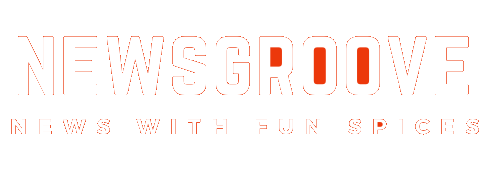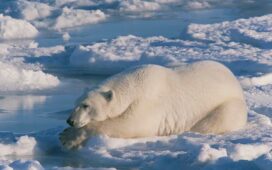
Having a sense of self lies at the heart of what it means to be human. Without it, we couldn’t navigate, interact, empathise or ultimately survive in an ever-changing, complex world of others.
We need a sense of self when we are taking action, but also when we are anticipating the consequences of potential actions, by ourselves or others.
Given that we want to incorporate robots into our social world, it’s no wonder that creating a sense of self in artificial intelligence (AI) is one of the ultimate goals for researchers in the field. If these machines are to be our carers or companions, they must inevitably have an ability to put themselves in our shoes. While scientists are still a long way from creating robots with a human-like sense of self, they are getting closer.
Researchers behind a new study, published in Science Robotics, have developed a robotic arm with knowledge of its physical form – a basic sense of self. This is nevertheless an important step.
There is no perfect scientific explanation of what exactly constitutes the human sense of self. Emerging studies from neuroscience show that cortical networks in the motor and parietal areas of the brain are activated in many contexts where we are not physically moving. For example, hearing words such as “pick or kick” activate the motor areas of the brain. So does observing someone else acting.
The hypothesis emerging from this is that we understand others as if we ourselves were acting – a phenomenon scientists refer to as “embodied simulation”. In other words, we reuse our own ability to act with our bodily resources in order to attribute meanings to the actions or goals of others. The engine that drives this simulation process is a mental model of the body or the self. And that is exactly what researchers are trying to reproduce in machines.
1/18 Fabric that changes according to temperature created
Scientists at the University of Maryland have created a fabric that adapts to heat, expanding to allow more heat to escape the body when warm and compacting to retain more heat when cold
Faye Levine, University of Maryland
2/18 Baby mice tears could be used in pest control
A study from the University of Tokyo has found that the tears of baby mice cause female mice to be less interested in the sexual advances of males
Getty
3/18 Final warning to limit “climate catastrophe”
The Intergovernmental Panel on Climate Change has issued a report which projects the impact of a rise in global temperatures of 1.5 degrees Celsius and warns against a higher increase
Getty
4/18 Nobel prize for evolution chemists
The nobel prize for chemistry has been awarded to three chemists working with evolution. Frances Smith is being awarded the prize for her work on directing the evolution of enzymes, while Gregory Winter and George Smith take the prize for their work on phage display of peptides and antibodies
Getty/AFP
5/18 Nobel prize for laser physicists
The nobel prize for physics has been awarded to three physicists working with lasers. Arthur Ashkin (L) was awarded for his “optical tweezers” which use lasers to grab particles, atoms, viruses and other living cells. Donna Strickland and Gérard Mourou were jointly awarded the prize for developing chirped-pulse amplification of lasers
Reuters/AP
6/18 Discovery of a new species of dinosaur
The Ledumahadi Mafube roamed around 200 million years ago in what is now South Africa. Recently discovered by a team of international scientists, it was the largest land animal of its time, weighing 12 tons and standing at 13 feet. In Sesotho, the South African language of the region in which the dinosaur was discovered, its name means “a giant thunderclap at dawn”
Viktor Radermacher / SWNS
7/18 Birth of a planet
Scientists have witnessed the birth of a planet for the first time ever.
This spectacular image from the SPHERE instrument on ESO’s Very Large Telescope is the first clear image of a planet caught in the very act of formation around the dwarf star PDS 70. The planet stands clearly out, visible as a bright point to the right of the center of the image, which is blacked out by the coronagraph mask used to block the blinding light of the central star.
ESO/A. Müller et al
8/18 New human organ discovered that was previously missed by scientists
Layers long thought to be dense, connective tissue are actually a series of fluid-filled compartments researchers have termed the “interstitium”.
These compartments are found beneath the skin, as well as lining the gut, lungs, blood vessels and muscles, and join together to form a network supported by a mesh of strong, flexible proteins
Getty
9/18 Previously unknown society lived in Amazon rainforest before Europeans arrived, say archaeologists
Working in the Brazilian state of Mato Grosso, a team led by archaeologists at the University of Exeter unearthed hundreds of villages hidden in the depths of the rainforest.
These excavations included evidence of fortifications and mysterious earthworks called geoglyphs
José Iriarte
10/18 One in 10 people have traces of cocaine or heroin on fingerprints, study finds
More than one in 10 people were found to have traces of class A drugs on their fingers by scientists developing a new fingerprint-based drug test.
Using sensitive analysis of the chemical composition of sweat, researchers were able to tell the difference between those who had been directly exposed to heroin and cocaine, and those who had encountered it indirectly.
Getty
11/18 Nasa releases stunning images of Jupiter’s great red spot
The storm bigger than the Earth, has been swhirling for 350 years. The image’s colours have been enhanced after it was sent back to Earth.
Pictures by: Tom Momary
12/18 A 3D reconstruction of an African grey parrot post euthanasia
Included in Wellcome Image Awards, this 3D image of an African grey parrot shows the highly intricate system of blood vessels.
Scott Birch. Wellcome Images
13/18 Baby Hawaiian bobtail squid
Another Wellcome Images Award winner, this time of baby Hawaiian bobtail squid. The black ink sac and light organ in the centre of the squid’s mantle cavity can be clearly seen.
Macroscopic Solutions. Wellcome Images
14/18 Skeletons of 5,000-year-old Chinese ‘giants’ discovered by archaeologists
The people are thought to have been unusually tall and strong. The tallest of the skeletons uncovered measured at 1.9m
YouTube
15/18 Nasa discovers 75,000 mile-wide hole in the Sun
Sunspots are caused by interactions with the Sun’s magnetic field and are cooler areas on the star’s surface.
Nasa
16/18 View(active tab) Apple News Breaking news email Edit Revisions Workflow Clear Cache NewsScience 132 million-year-old dinosaur fossil found at factory in Surrey
Paleontologists Sarah Moore and Jamie Jordan believe they have discovered a Iguanodon dinosaur, a herbivore that was around three metres tall and 10 metres long
Cambridge Photographers/Wienerberger
17/18 Discovering life on Mars is less likely as researchers find toxic chemicals on its surface
The Echus Chasma, one of the largest water source regions on Mars
Getty Images
18/18 An iris clip fitted onto the eye
This images is apart of the Wellcome Images Awards and shows how an artificial intraocular lens is fitted onto the eye. Used for conditions such as myopia and cataracts.
Cambridge University Hospitals NHS FT. Wellcome Images
1/18 Fabric that changes according to temperature created
Scientists at the University of Maryland have created a fabric that adapts to heat, expanding to allow more heat to escape the body when warm and compacting to retain more heat when cold
Faye Levine, University of Maryland
2/18 Baby mice tears could be used in pest control
A study from the University of Tokyo has found that the tears of baby mice cause female mice to be less interested in the sexual advances of males
Getty
3/18 Final warning to limit “climate catastrophe”
The Intergovernmental Panel on Climate Change has issued a report which projects the impact of a rise in global temperatures of 1.5 degrees Celsius and warns against a higher increase
Getty
4/18 Nobel prize for evolution chemists
The nobel prize for chemistry has been awarded to three chemists working with evolution. Frances Smith is being awarded the prize for her work on directing the evolution of enzymes, while Gregory Winter and George Smith take the prize for their work on phage display of peptides and antibodies
Getty/AFP
5/18 Nobel prize for laser physicists
The nobel prize for physics has been awarded to three physicists working with lasers. Arthur Ashkin (L) was awarded for his “optical tweezers” which use lasers to grab particles, atoms, viruses and other living cells. Donna Strickland and Gérard Mourou were jointly awarded the prize for developing chirped-pulse amplification of lasers
Reuters/AP
6/18 Discovery of a new species of dinosaur
The Ledumahadi Mafube roamed around 200 million years ago in what is now South Africa. Recently discovered by a team of international scientists, it was the largest land animal of its time, weighing 12 tons and standing at 13 feet. In Sesotho, the South African language of the region in which the dinosaur was discovered, its name means “a giant thunderclap at dawn”
Viktor Radermacher / SWNS
7/18 Birth of a planet
Scientists have witnessed the birth of a planet for the first time ever.
This spectacular image from the SPHERE instrument on ESO’s Very Large Telescope is the first clear image of a planet caught in the very act of formation around the dwarf star PDS 70. The planet stands clearly out, visible as a bright point to the right of the center of the image, which is blacked out by the coronagraph mask used to block the blinding light of the central star.
ESO/A. Müller et al
8/18 New human organ discovered that was previously missed by scientists
Layers long thought to be dense, connective tissue are actually a series of fluid-filled compartments researchers have termed the “interstitium”.
These compartments are found beneath the skin, as well as lining the gut, lungs, blood vessels and muscles, and join together to form a network supported by a mesh of strong, flexible proteins
Getty
9/18 Previously unknown society lived in Amazon rainforest before Europeans arrived, say archaeologists
Working in the Brazilian state of Mato Grosso, a team led by archaeologists at the University of Exeter unearthed hundreds of villages hidden in the depths of the rainforest.
These excavations included evidence of fortifications and mysterious earthworks called geoglyphs
José Iriarte
10/18 One in 10 people have traces of cocaine or heroin on fingerprints, study finds
More than one in 10 people were found to have traces of class A drugs on their fingers by scientists developing a new fingerprint-based drug test.
Using sensitive analysis of the chemical composition of sweat, researchers were able to tell the difference between those who had been directly exposed to heroin and cocaine, and those who had encountered it indirectly.
Getty
11/18 Nasa releases stunning images of Jupiter’s great red spot
The storm bigger than the Earth, has been swhirling for 350 years. The image’s colours have been enhanced after it was sent back to Earth.
Pictures by: Tom Momary
12/18 A 3D reconstruction of an African grey parrot post euthanasia
Included in Wellcome Image Awards, this 3D image of an African grey parrot shows the highly intricate system of blood vessels.
Scott Birch. Wellcome Images
13/18 Baby Hawaiian bobtail squid
Another Wellcome Images Award winner, this time of baby Hawaiian bobtail squid. The black ink sac and light organ in the centre of the squid’s mantle cavity can be clearly seen.
Macroscopic Solutions. Wellcome Images
14/18 Skeletons of 5,000-year-old Chinese ‘giants’ discovered by archaeologists
The people are thought to have been unusually tall and strong. The tallest of the skeletons uncovered measured at 1.9m
YouTube
15/18 Nasa discovers 75,000 mile-wide hole in the Sun
Sunspots are caused by interactions with the Sun’s magnetic field and are cooler areas on the star’s surface.
Nasa
16/18 View(active tab) Apple News Breaking news email Edit Revisions Workflow Clear Cache NewsScience 132 million-year-old dinosaur fossil found at factory in Surrey
Paleontologists Sarah Moore and Jamie Jordan believe they have discovered a Iguanodon dinosaur, a herbivore that was around three metres tall and 10 metres long
Cambridge Photographers/Wienerberger
17/18 Discovering life on Mars is less likely as researchers find toxic chemicals on its surface
The Echus Chasma, one of the largest water source regions on Mars
Getty Images
18/18 An iris clip fitted onto the eye
This images is apart of the Wellcome Images Awards and shows how an artificial intraocular lens is fitted onto the eye. Used for conditions such as myopia and cataracts.
Cambridge University Hospitals NHS FT. Wellcome Images
The physical self
The team behind the new study used a deep learning network to create a self-model in a robotic arm through data from random movements. Importantly, the AI was not fed any information about its geometrical shape or underlying physics, it learned gradually as it was moving and bumping into things – similar to a baby learning about itself by observing its hands.
It could then use this self-model containing information about its shape, size and movement to make predictions related to future states of actions, such as picking something up with a tool. When the scientists made physical changes to the robot arm, contradictions between the robot’s predictions and reality triggered the learning loop to start over, enabling the robot to adapt its self-model to its new body shape.
While the present study used a single arm, similar models are also being developed for humanoid robots through the process of self-exploration (dubbed sensory motor babbling) – inspired by studies in developmental psychology.
The complete self
Even so, a robotic sense of self does not come close to the human one. Like an onion, our self has several mysterious layers. These include an ability to identify with the body, being located within the physical boundaries of that body and perceiving the world from the visuospatial perspective of that body. But it also involves processes that go beyond this, including integration of sensory information, continuity in time through memories, agency and ownership of one’s actions and privacy (people can’t read our thoughts).
While the quest to engineer a robotic sense of self that encompasses all these multiple layers is still in its infancy, building blocks such as the body schema demonstrated in the new study are being created. Machines can also be made to imitate others and predict the intentions of others or adopt their perspective. Such developments, along with growing episodic memory, are also important steps towards building socially cognitive robotic companions.
Interestingly, this research can also help us learn more about the human sense of self. We know now that robots can adapt their physical self-model when changes are made to their bodies. An alternative way to think about this is in the context of tool use by animals, where diverse external objects are coupled to the body (sticks, forks, swords or smartphones).
Imaging studies show that neurons active during hand grasping in monkeys also become active when they grasp using pliers, as if the pliers were now the fingers. The tool becomes a part of the body and the physical sense of self has been altered. It is similar to how we consider the avatar on the screen as ourselves while playing video games.
An intriguing idea originally proposed by Japanese neuroscientist Atsushi Iriki is that the ability to literally incorporate external objects into one’s body and the ability to objectify other bodies as tools are two sides of the same coin. Remarkably, this blurred distinction requires the emergence of a virtual concept – the self – to act as a place holder between the subject/actor and objects/tools. Tweaking the self by adding or removing tools can, therefore, help us probe how this self operates.
Robots learning to use tools as an extension to their bodies are fertile test beds to validate such emerging data and theories from neuroscience and psychology. At the same time, the research will lead to the development of more intelligent, cognitive machines working for and with us in diverse domains.
Perhaps this is the most important aspect of the new research. It ultimately brings together psychology, neuroscience and engineering to understand one of the most fundamental questions in science: who am I?
We’ll tell you what’s true. You can form your own view.
At The Independent, no one tells us what to write. That’s why, in an era of political lies and Brexit bias, more readers are turning to an independent source. Subscribe from just 15p a day for extra exclusives, events and ebooks – all with no ads.














